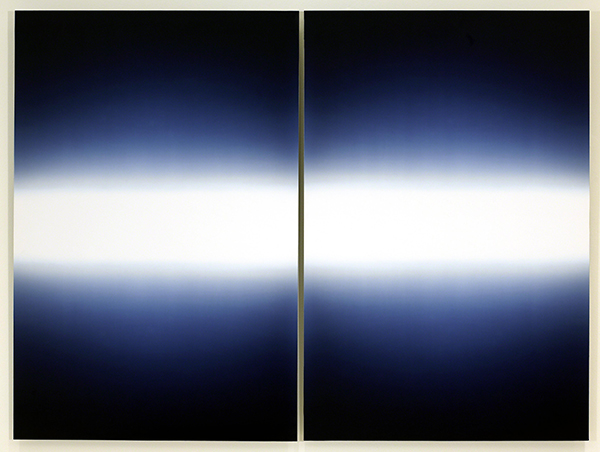Women's (Art) History Month: Erika Blumenfeld
Women’s Art History Month continues with a look at an artist who has a totally unique body of work, pursuing with photography what artists have done since its inception in the 1840s: the use of the medium for scientific research.
 |
| Erika Blumenfeld (born 1971, U.S.), Light Recording: Meditation on Radiance #3, 2002. Digital print on aluminum panel, 36" x 45" (91.4 x 114.3 cm). Courtesy of the Albright-Knox Art Gallery, Buffalo, NY. © 2021 Erika Blumenfeld. (AK-1716) |
Artist and ecologist Erika Blumenfeld believes that light is one of the wonders of the universe. Since 1998 she has produced digital and video-based photojournalism to document aspects of the natural world. She is an interdisciplinary artist, her work driven by her interest in the relationships between nature and culture, and by a greater bond between the cosmos and human beings and their biosphere. From her earliest work in the photographic medium, Blumenfeld was interested in objects as they appeared in nature. She ultimately discovered she was not interested in photographing the object itself, such as a landscape or sunset, but rather the essence of the object.
Blumenfeld considers her vocation to be that of an ecological archivist. She has chronicled a wide range of phenomena including atmospheric and astronomic events, bioluminescent organisms, wildfires, and natural phenomena of Antarctica. In all of these investigations, she produces multiple images of the subject, examining the connection between external beauty and the complex structure, yet fragile nature of current ecology.
Blumenfeld briefly gave up photography due to the daunting nature of her quest, but ultimately settled on the answer in her Light Leaks series in 1998. Therein she explored the beauty and simplicity of light leaks in her camera, and the series became focused on the most basic elements of photography, light and light-sensitive material. She received a BFA in photography from Parsons School of Design in 2006.
The Light Leaks series led to Blumenfeld's Light Recordings. In them, the artist does not use a traditional camera or lens, but rather light leaking across the film in even gradation. The amount of light and duration of the exposure, in Blumenfeld's mind, makes Light Recordings a study of both light and time. In her Light Leaks works, Blumenfeld used Polaroids, but in Light Recordings she uses large sheets of photographic paper exposed to light. The larger support enables the artist to focus more closely on the action of the light. These exposures are then photographed digitally, printed, and mounted on aluminum.
Since the advent of photography, the art form was largely perceived as a "factual" medium. It was believed to be the great truth teller, despite the fact that, from its beginning, photographers manipulated photographic images in a number of ways. Be that as it may, photography was used as a valuable study tool for exploring various aspects of nature. Notable early (1800s) studies included flora and fauna, landscape, and aspects of mental illness as reflected in physiognomy.
In the 2000s, the relationship between science and photography has progressed to the point where it has the ability to demystify nature. Whereas 1800s photography focused on visible aspects of nature, digital technology in the 2000s has allowed photography to penetrate the sub-atomic building blocks of all forms of life. The photographic portrait is no longer limited to the external appearance, but includes DNA profiles.
In a century when the planet is increasingly threatened by disastrous changes in the biosphere, many artists have chosen to use photography as a tool to explore the very nature of the barely visible aspects of the natural world as aesthetic expression. Such photography does not only express the beauty of nature, but also the intrinsic structure of natural phenomenon.
Correlations to Davis Programs: Focus on Photography 2E: Chapter 3


Comments